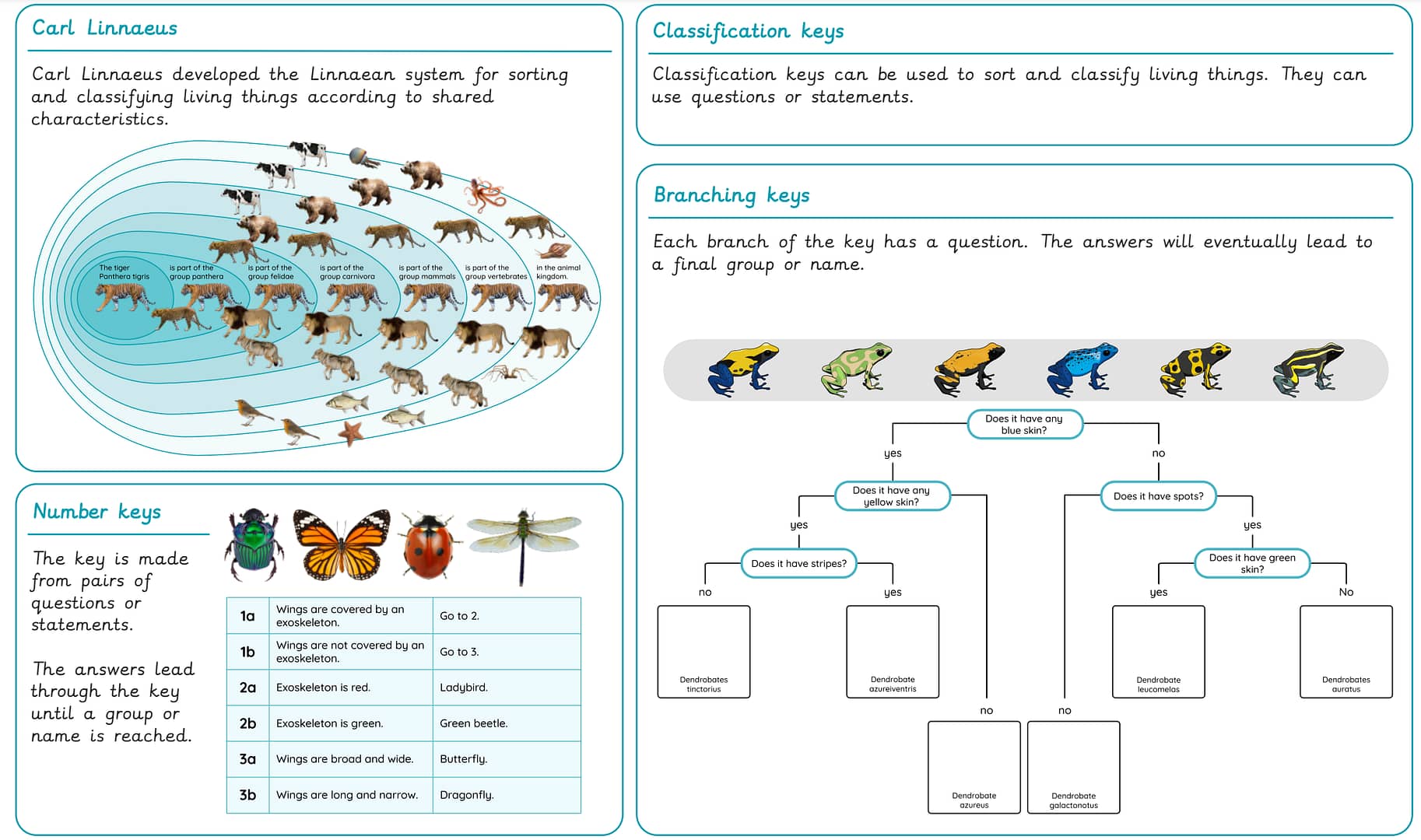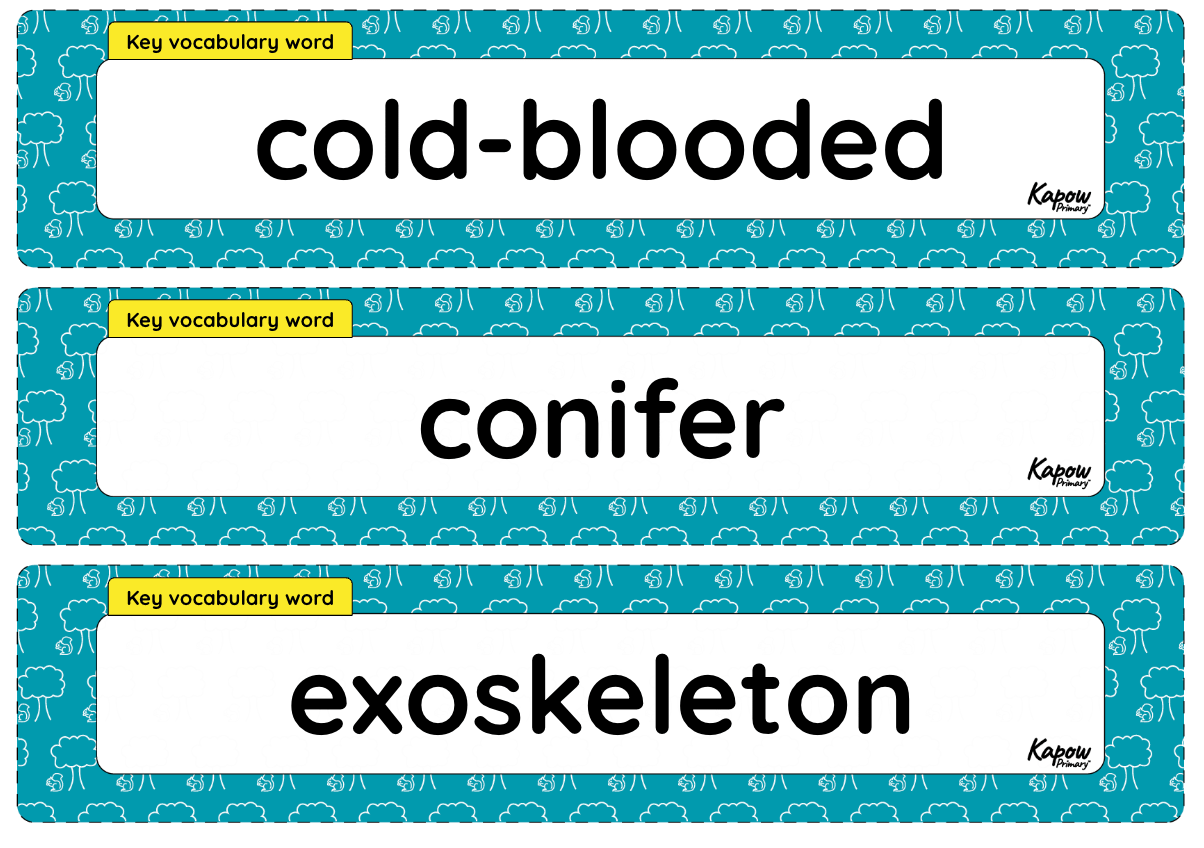Y5/6 (B): Living things: Classifying big and small
Use this unit hub to inform your medium-term plan and navigate related resources.
The Curriculum and Assessment Review final report has been released. We’re reviewing the recommendations and planning for future updates. Learn more
Unit outcomes
Pupils who are secure will be able to:
- Define the term ‘organism’ and name the seven life processes of all living things.
- Describe the work of Carl Linnaeus.
- Define the term ‘vertebrate’ and name the vertebrate groups.
- Describe the characteristics of fish, amphibians, reptiles, birds and mammals.
- Compare the characteristics of the vertebrate groups.
- Define the term ‘invertebrate’.
- Describe the characteristics of worms, snails, spiders and insects.
- Compare the characteristics of the invertebrate groups.
- Name the plant groups.
- Describe the characteristics of flowering plants, ferns, mosses and conifers.
- Define the term ‘micro-organism’ and name some examples.
When working scientifically pupils who are secure will be able to:
- Use a classification key to group and identify organisms.
- Make a simple classification key.
Please note that Kapow Primary Science lessons are designed to be 1 hour and 30 minutes long, to reflect the requirements of a core subject.
Suggested prior learning
Lessons
Y5/6 (B): Lesson 1: Carl Linnaeus and classification
Knowledge
- To explain how organisms are classified using the Linnaean system.
Y5/6 (B): Lesson 2: Cold-blooded vertebrates
Knowledge
- To classify the cold-blooded vertebrate groups using their common characteristics.
Working scientifically
- To use a classification key to classify frog species.
Y5/6 (B): Lesson 3: Warm-blooded vertebrates
Knowledge
- To classify the warm-blooded vertebrate groups using their common characteristics.
Working scientifically
- To use a classification key to classify vertebrates.
Y5/6 (B): Lesson 4: Invertebrates
Knowledge
- To classify invertebrates using their characteristics.
Working scientifically
- To use a classification key to classify invertebrates.
Y5/6 (B): Lesson 5: Plants
Knowledge
- To describe how the plant kingdom is organised (based on shared characteristics).
Working scientifically
- To produce a working classification key.
Y5/6 (B): Lesson 6: Micro-organisms
Knowledge
- To describe and classify micro-organisms.
Working scientifically
- To use a classification key to classify bacteria.
Key skills
Related content
Unit resources

Knowledge organiser – Science Y5/6 (B): Living things: Classifying big and small
Aimed at pupils, two pages providing key facts and definitions from the mixed-age unit ‘Classifying big and small’.

Vocabulary display – Science Y5/6 (B): Living things: Classifying big and small
A display version of the vocabulary from the mixed-age unit 'Classifying big and small'.
Cross-curricular opportunities
British values: mutual respect.
Art: clay sculpture.
English: writing.

